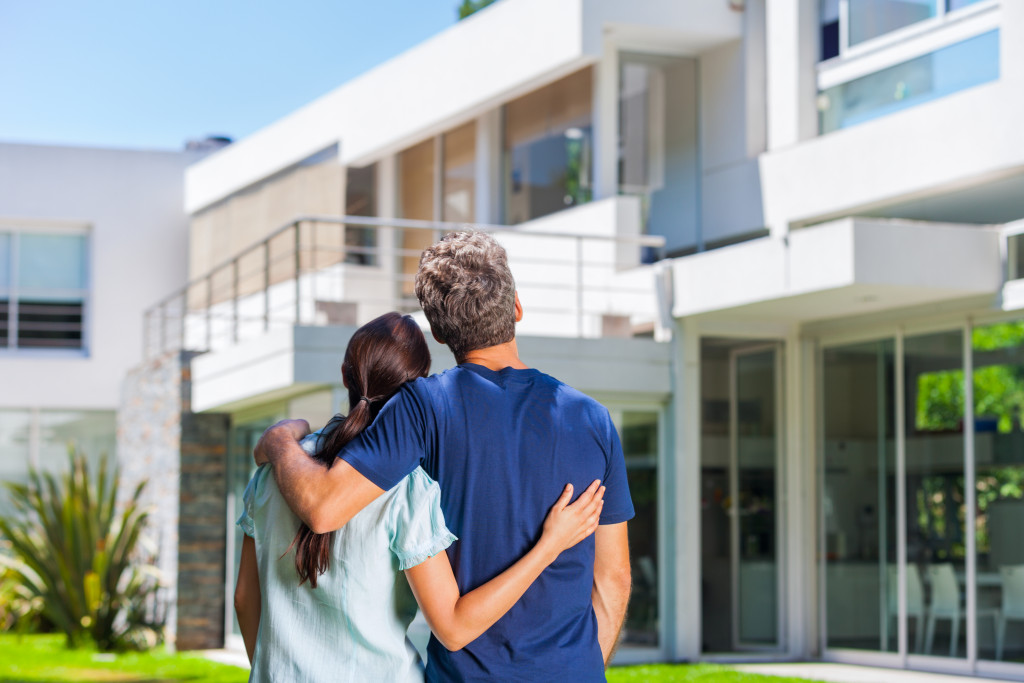- Homeownership offers numerous benefits, including wealth accumulation, job security, improved mental health, and tax benefits.
- Comfort can be achieved through regulating the temperature, adequate lighting, quality furniture, and thoughtful space planning.
- Investing in energy-efficient technologies, appliances, and lighting helps reduce energy consumption while providing more significant savings.
- Security measures like alarm systems, surveillance cameras, and physical barriers offer extra protection against burglars or threats.
Homes are a crucial part of life, providing individuals and families a secure place to live, rest, and socialize. Homeownership is more than just an investment in one’s property; it is an investment in one’s well-being and future. Studies have shown that owning a home can help build wealth and stability over time.
In the U.S., homeownership rates have consistently been on the rise since the early 1900s due to the many advantages of owning a home. On average, homeowners are twice as likely to accumulate wealth as renters over their lifetime. Homeowners tend to have higher incomes, greater job security, higher levels of education, improved mental health, and longer life expectancy compared to renters or those without homes of their own. Additionally, homeowners enjoy numerous tax benefits from which renters may not reap as much.
However, having a residential property does not mean you have a home. You will find that the journey to creating your ideal home is not straightforward and involves several aspects. Here are some of the considerations you should have in mind when creating your perfect home:
Comfort

Comfort is an essential factor to consider when creating the ideal home. It contributes significantly to one’s overall psychological and physical health. A comfortable environment can help reduce stress, improve mood, encourage creativity, and promote relaxation. Furthermore, a comfortable home can help enhance sleep quality and provide safety, security, and protection.
To create a comfortable home environment that meets your individual needs, there are several considerations to keep in mind:
Temperature
Temperature plays a vital role in creating a comfortable atmosphere in your home. Too cold or hot temperatures can cause discomfort and distract you from activities like sleeping or working. Installing temperature-regulating systems such as air conditioning or heating units can help ensure comfort levels stay stable throughout the day.
Lighting
Lighting is another factor to consider for comfort levels in your home. Natural light helps provide cheeriness and energy during daytime hours, while artificial light sources such as lamps or LED bulbs can be used during nighttime hours to set the right mood for restful sleep or cozy nights at home with friends or family.
Furniture
Investing in high-quality furniture is essential for achieving comfort at home. Looking into ergonomic designs that adapt to the user’s body shape is recommended. Plus, adjusting features like armrests and footrests ensures comfort levels are met regardless of sitting posture. Comfort should also go beyond just design. Materials that feel soft on the skin, like luxurious fabrics and leathers, will add cheering vibes around the house when relaxation time comes around!
Layout
Thoughtful planning of space goes a long way in creating a comfortable home environment- deciding which items belong where is key since clutter tends to affect well-being negatively. Placing furniture away from traffic paths makes movement safer while providing easy access from one area to another without hassle.
Energy Efficiency

Energy efficiency should be a primary consideration when creating the ideal home environment. Investing in energy-saving technologies and energy-efficient appliances can help reduce energy consumption, resulting in lower energy bills and increased savings. Additionally, energy-efficient homes are more likely to receive higher energy performance certificate ratings than non-energy-efficient homes, which could make them more attractive to potential buyers.
Creating an energy-efficient home starts by looking at where energy is wasted and adjusting accordingly. Windows and doors should be checked for air leakage and drafts; insulation should be improved if necessary; heating, cooling, and ventilation systems should be inspected for energy efficiency. Energy-efficient lightings such as LED bulbs or natural light sources should be used wherever possible, and energy-saving designs like solar panels or geothermal heating systems should also be considered.
Security
Security is an essential factor to consider in the home-building process. No one wants to feel vulnerable or threatened within their homes, so security should be considered when creating the ideal living environment.
Some of the most effective strategies for ensuring home security include installing a sound alarm system, setting up motion detectors, updating locks and door hardware regularly, investing in high-quality windows, and using surveillance cameras. Safety measures like keeping valuables away from plain sight and maintaining outdoor lighting can also help deter burglars.
Physical barriers like fences and security gates can also be added for extra protection. You can have those customized to match the design of your home and keep unwanted guests away.
Final Thoughts
Creating the ideal home involves more than just having a residential property—it is about finding a safe place to call your own and making it a reflection of yourself. Considering comfort, layout, energy efficiency, and security will help ensure your home environment is secure and enjoyable. Proper planning and knowledge of necessary considerations allow you to create an ideal living space that combines form and function!
